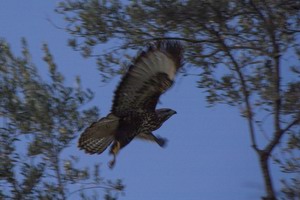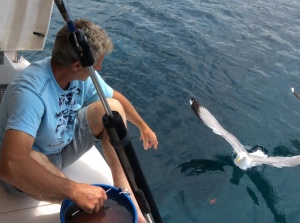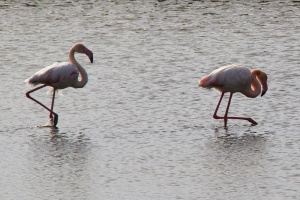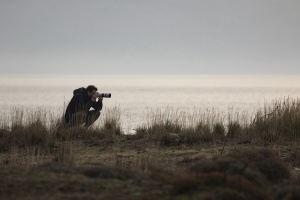Spring comes, follow the migratory birds in the Aegean
 Lesvos is located in the Aegean Sea which is a “hotspot” for bird migration. Its proximity to the Asia Minor coastline is an additional reason for many bird species of Oriental origin to be found here. At the same time it is located in a wider area that serves as a wintering refugee for many European ranged birds.
Lesvos is located in the Aegean Sea which is a “hotspot” for bird migration. Its proximity to the Asia Minor coastline is an additional reason for many bird species of Oriental origin to be found here. At the same time it is located in a wider area that serves as a wintering refugee for many European ranged birds.Lesvos has been declared the island of wetlands for the Aegean Sea while 56 natural and 7 artificial wetlands have been recorded here (note: the island of Evvia which is larger comes in second place with 19 wetlands!). The wetlands are the most popular areas to watch birds mostly during the spring and autumn migration season. They are mosaics of different habitat types (salt pans, estuaries, lagoons, salt marshes etc) of rather small size that are both important for birds and easy to access.
In the Kalloni Gulf wetlands alone over 120 species of birds have been recorded. Some important and easy to watch wetland species are: Flamingo (Phoenicopterus ruber), Avocet (Recurvirostra avocetta), Ruddy Shelduck (Tadorna ferruginea), Black-winged Stilt (Himantopus himantopus), Glossy Ibiss (Plegadis falcinellus), and Black Stork (Ciconia nigra). On a more “lucky” wetland day one can also watch: Stone Curlew (Burhinus oedicnemus), Marsh Sandpiper (Tringa stragnatilis), Slender-billed Gull (Larus genei) Gull-billed tern (Gelohelidon nilotica), White-winged tern (Chlidonias leucopterus), Squacco heron (Ardeola ralloides) etc.
Lesvos is the only area in Europe when one can watch the Kruper’s Nuthatch (Sitta krueperi) and the best one to watch Cinereous bunting (Emberiza cineracea. Other special birds to see here (not found in Central or Northern Europe) are: the Cretczschmar’s Bunting (Emberiza caesia), Black-headed Bunting (Emberiza melenocephala), Ruppell’s and Sub-alpine Warbler (Sylvia ruepelli, S. cantillans), Isabeline and Black-eared Whetear (Oenanthe isabellina, O. hispanica), Masked and Woodchat Shrike (Lanius nubicus, L. senator), Eastern Rock Nuthatch (Sitta neumayer), Long-legged Buzzard (Buteo rufinus) and many more.
While sailing in the open sea and the gulfs of Lesvos one can also watch Audouin’s Gull (Larus auduinii), Shag (Phalacrocorax aristotelis), Mediterranean and Cory’s Sherwater (Puffinus yelkuan, Calonectris diomedea), and, in late summer and autumn Eleonora’s Falcon (Falco eleonarae).
But the island has many more to offer than birds alone! Going around on foot, by bike or even by car is a unique opportunity to watch Mediterranean nature in its full glory-especially during the spring and early summer months. The island can boast of its wide range of orchids (more than 90 different species, mostly of the genus Orphys, Orchis and Serepias). Also numerous other wild flowers found in most areas and special species (e.g. Paeonia, Frilitary) and the Rhododendron shrub found in the Agiassos and Parakila mountainous areas, respectively. Not to be left unmentioned, rare and protected amphibian and reptiles, butterflies, dragonflies etc can be found here, too. Additional interesting features to watch while in a field trip are details of the rural landscapes providing more insight on the island’s special ecological and social environment.
Useful links for more evidence of Lesvos being a very popular area to watch nature:
website of the Wetland Information Center in Skala Kallonis
information for rare birds of Lesvos
Or simply Google it yourself!











 Our location
Our location





















































